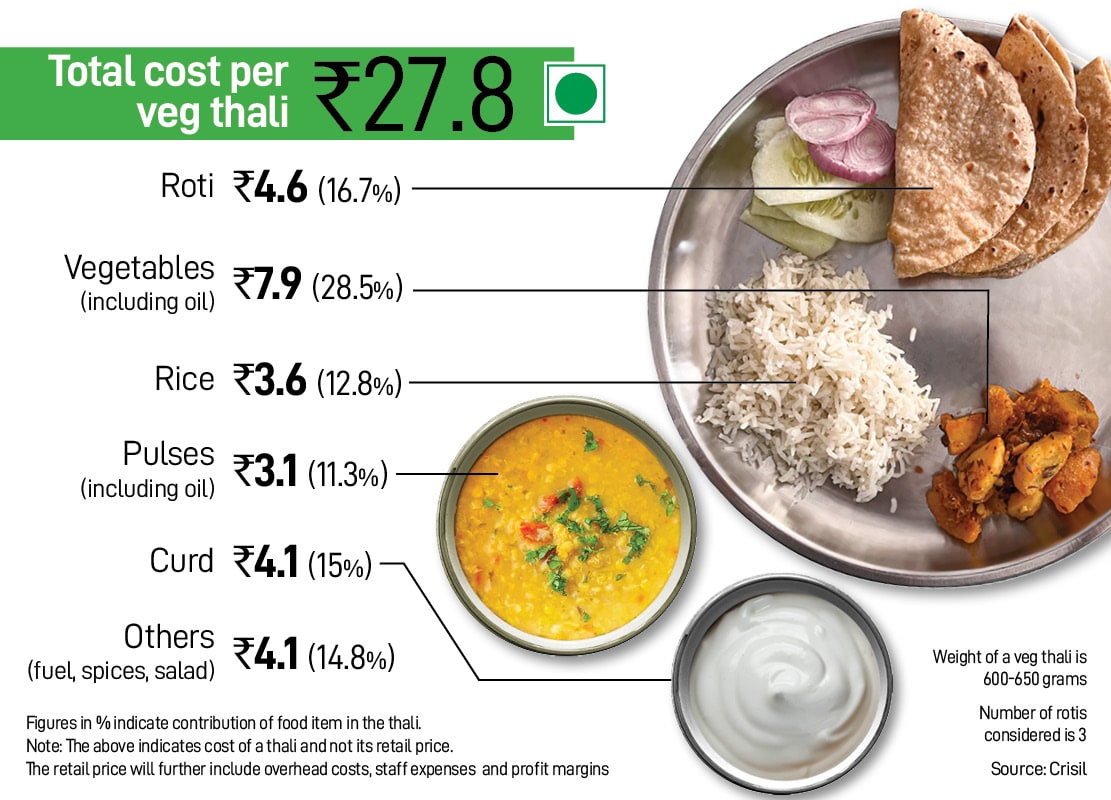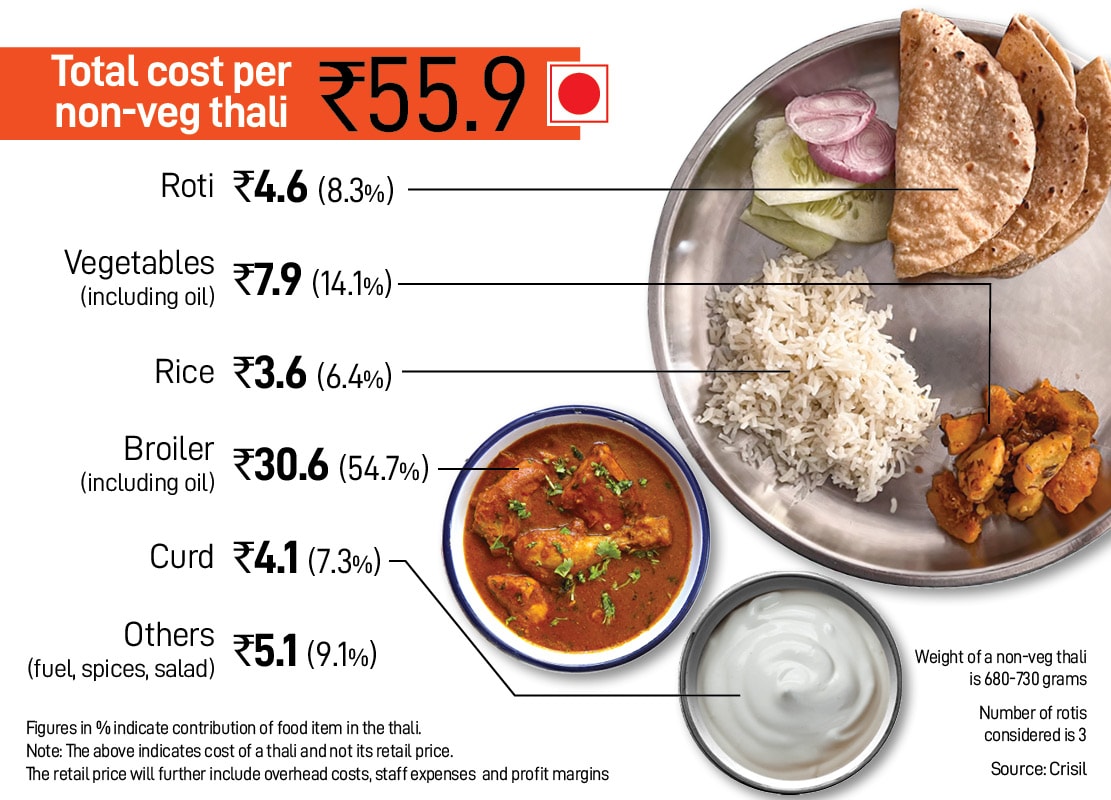![]()
Divergence in prices of vegetarian and non-vegetarian home-cooked meals continued even in May as key ingredients like tomato, onion and potato remained costly while broiler chicken prices declined. Prices of other major items like rice and pulses also increased in the month, impacting the overall cost of thali. Crop damage contributed to the increase in food prices last month.
The average price of a representative home-cooked veg thali jumped by 9 percent in May, costing Rs27.8 as per Crisil MI&A Research estimates. The same thali cost Rs25.5 last May. However, compared to April, the pace of increase in cost is much slower (1 percent month-on-month) at Rs27.4 a plate.
The cost of veg thali increased due to a surge of 39 percent, 41 percent and 43 percent year-over-year respectively in prices of tomato, potato and onion, largely because of the low base of last fiscal, says Crisil. Lower onion arrivals led by significant drop in rabi acreage with a decline in potato arrivals because of adverse impact of late blight and crop damage in West Bengal contributed towards the increase in prices. Blight is a specific symptom affecting plants in response to infection by a pathogenic organism.
![]()
Price of rice (which accounts for 13 percent of the veg thali cost) also increased by 13 percent year-on-year. Lower water reservoir levels impacted production of pulses leading to a 21 percent increase in prices on an annual basis. Pulses account for 9 percent of the veg thali cost. On the contrary, prices of cumin, chilli and vegetable oil fell by 37 percent, 2 percent and 8 percent, respectively, preventing a further increase in the cost of the veg thali.
The average cost of preparing a thali at home is calculated based on input prices prevailing in north, south, east and west India. The monthly change reflects the impact on the common man’s expenditure. The data also reveals the ingredients (cereals, pulses, broilers, vegetables, spices, edible oil, cooking gas) driving changes in the cost of a thali.
![]()
Meanwhile, cost of a representative home-cooked non-vegetarian thali declined by 7 percent in May. The non-vegetarian thali cost Rs55.9 compared to Rs59.9 last May. The decline in the cost of non-veg thali is due to an estimated 16 percent drop in broiler prices year-on-year on a high base of last fiscal. Prices of broilers account for 50 percent of a non-veg thali cost. Even on a monthly basis, the price of a non-vegetarian thali slipped by 1 percent. In April, a non-veg thali cost Rs56.3.
Consumer price index (CPI) or retail inflation eased marginally to 4.8 percent in April from 4.9 percent in March. Food inflation, however, edged up to 8.7 percent from 8.5 percent, driven by costlier cereals and meat vegetables, which have been sticky at elevated levels, softened a touch. Prices of edible oils fell at a softer pace year over year.
Food inflation, which has a 39.1 percent weight in the CPI gauge, has remained well above 8 percent for six months now. The pressure on food prices continues with the ongoing heatwaves. Crisil expects the upcoming monsoon rains to offer respite, assuming they are well-distributed in terms of time and geography.
(Forbes India"s monthly series "How India Eats" takes a look at how the average price of a food plate in India changes every month, indicating the impact on the common man"s expenditure, by analysing the Indian thali.)



